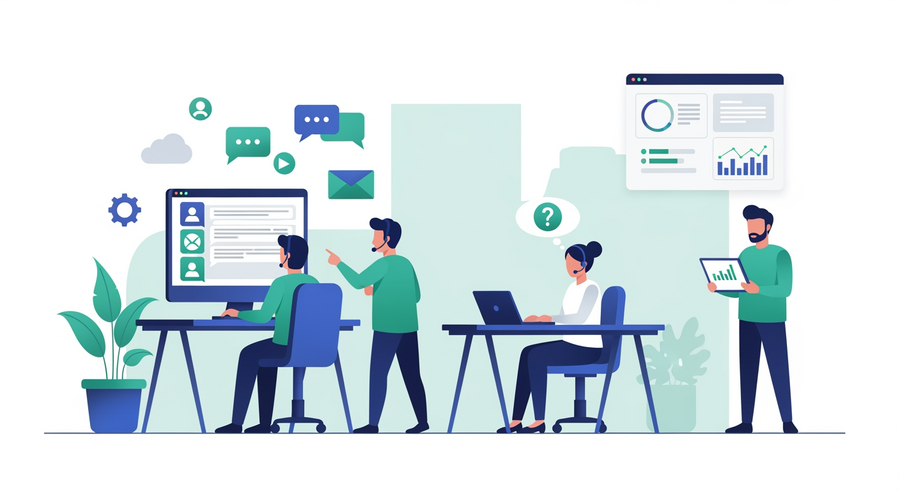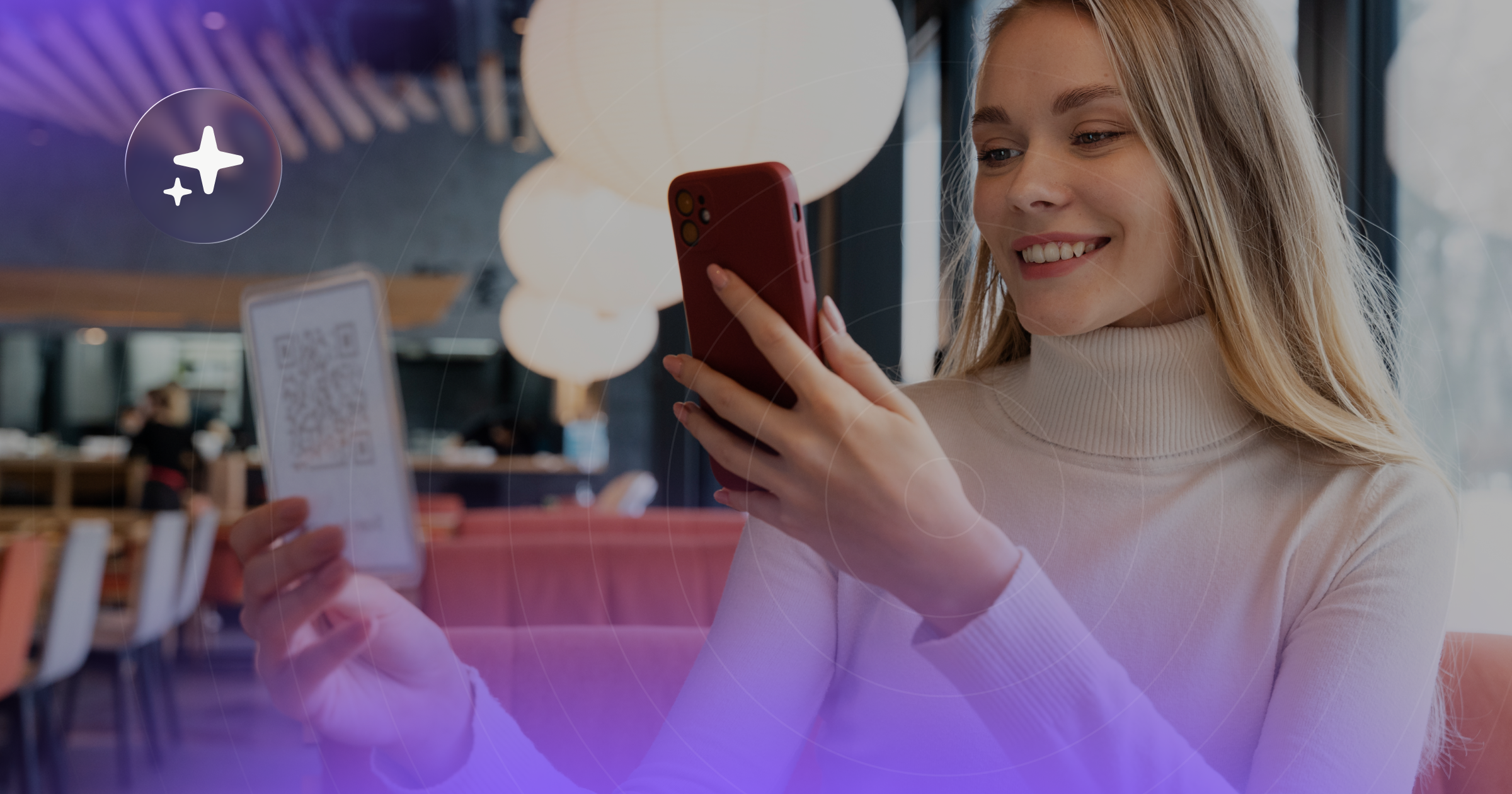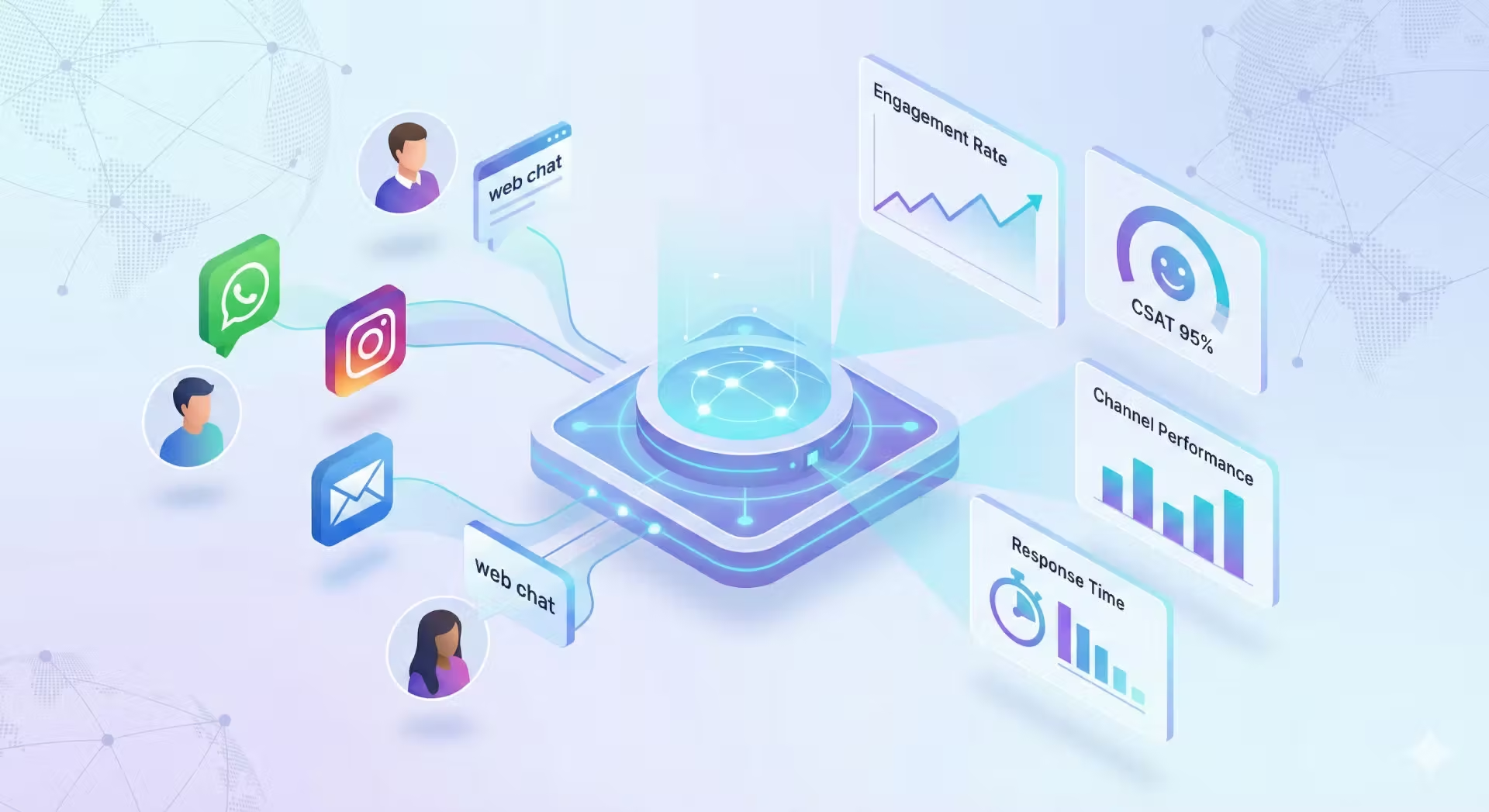When you walk into a store, it feels good to be greeted by the clerk. Even if he's currently busy, a quick "Welcome! I'll be right with you" does wonders. It makes you feel recognized and appreciated as a customer.
The same principle applies to Facebook Messenger. As a customer, you'll understand that a customer service agent may not be able to help out immediately. But a simple welcome message with an estimated waiting time will surely be appreciated.
That's why businesses can decide to set a Facebook Messenger welcome message.
In this blog, you'll learn all there is to know about welcome messages for Facebook Messenger and how you can use them. We'll discuss:
- What is a Facebook Messenger welcome message?
- The advantages of using Facebook Messenger welcome messages
- Facebook Messenger welcome message examples
What is a Facebook Messenger welcome message?
A Facebook Messenger welcome message is an automated welcome message to anybody that reaches out to you via Messenger. You can put together different welcome messages for specific occasions. For instance, you could decide to create one for messages during business hours, and one for messages outside of business hours.
By using Trengo, you can create one welcome message and deploy them on all your communication channels, such as email, WhatsApp Business, live chat, WeChat, and of course Facebook Messenger.
The advantages of using FB Messenger welcome messages
There are a couple of nice advantages to setting up a Facebook Messenger welcome message:
- You give customers a warm welcome
- Customers outside of business hours won't have to wait too long for a reply
- You set clear expectations for when customers can receive a reply
- You'll be able to collect leads — even without human contact
It's a small effort to set a welcome message, but there's a lot to gain.
Another great example of using a welcome message effectively is by using it during specific events. For instance, is your website offline? Then you can be assured most messages will be about that. So why not save yourself the effort of answering all those messages one by one, and simply inform them with a welcome message?
How to create an effective Facebook Messenger welcome message
Coming up with a greeting message isn't rocket science. But there are a couple of best practices you should keep in mind.
1. Set expectations
The number one reason for creating a welcome message is to set clear expectations for all of your messenger users. You want your customer to know exactly when they will be responded to, or where they can go for information.
This is not going to cut it:
"We'll get back to you as soon as possible".
This is much better:
"Our agents are busy. We'll make sure to get back to you within the hour. In the meantime, you can visit [website page] to read our FAQ section."
2. Be honest
If, for example, your website is offline and your agents are in over their heads, you'll probably get more messages than usual. In that case, a standard greeting message can help you inform your customers of what's going on.
When you decide to inform customers, simply be honest. 'Due to unexpected circumstances' is not enough. Tell them exactly what is going on, and what you're doing to solve whatever the issue is. This is the only way to get some form of understanding.
3. Keep it conversational
Remember, you are on Facebook Messenger. So don't write this message the way you would put together your email auto-reply.
On any instant messaging app, you want to keep your writing as conversational as possible. Keep it short, to the point, and informal.
10 ready-to-use Facebook Messenger welcome message examples
Different situations require different types of welcome messages. Below, you'll find different variations for your customer support team, during special events, when you're out of the office, or when you want to collect leads.
So, without any further ado...
General Facebook Messenger welcome message examples
1. “Thanks for your message! We'll make sure to get back to you within [number] hours. Best, the [your business] Team.“
2. “Howdy! Welcome to [your business]. We will get back to you within [number] hours. In the meantime, you can have a look at our help center. There's a lot of information in there, so there's a good chance you won't need us after!”
3. “Hello! Good to see you. Did you already know we currently offer a [number]% discount on all of our products? The code is XXXX. Don’t tell anybody, though 😉 Let me know if you have any other questions and I will get back to you within [time]!”
As I said, it's not rocket science. On Facebook Messenger, the key is to keep it simple and light. Even if informal doesn't quite fit your tone of voice, make sure to find a straightforward version of whatever style does fit your brand.
Customer service welcome message examples
4. “Hello, thank you for your message! Our agents will make sure it is forwarded to the best-fit person and will respond within [number] hours.”
5. “In the meantime, you can check out our help centre full of answers to frequently asked questions here: [add your own link].
Self-service is becoming an increasingly important part of the customer experience. So when customers reach out, providing them with a link to your help centre is a way of offering that. This is especially useful when customers are messaging you outside of your business hours.
Welcome messages for special occasions
During seasonal activities or other special occasions, your welcome messages may need some edits. Whether it's busy because of Christmas time, or you need to inform customers because your website is offline. Here are two examples.
6. “Ho ho ho! Our elves are very busy packing all of the gifts, so we may not reply as fast as you are used to from us. In the meantime, Santa left you a special discount code: [code].”
7. “Hey there, how can I help you? Because our website is experiencing some trouble, we are a bit busier than usual. This means we may not be able to reply as fast as we'd like. For more information on the outage, please visit [page]."
Welcome messages for out-of-office usage
When there is nobody in the office to answer incoming Facebook Messenger messages, your customers may have to bridge some time before getting a reply. There are multiple ways to tackle this.
Send to website
8. “Thank for your message! We are currently out of the office, but we'll get back to you first thing in the morning. For more information, please head over to our website: [page]."
Reply with your opening hours
At Trengo, we use the following out-of-office message:
- “Thanks for contacting Trengo! We’d love to help, but we’re currently closed 🕦 (See our schedule at trengo.com/contact). We’ll come back to you the next working day ⏰. In the meantime, did you know we have a Help Center at help.trengo.com that answers our most frequently asked questions? Perhaps you’ll find your answer without the help of our agents 😱. Cheers, The Trengo team”
As you can see, we also incorporate our help center and give customers a clear reason why we are not able to respond right away.
Collect a lead
10. “Hey there! Sorry, we are currently not able to respond to your message. Please leave your name and email address, and we will get back to you within 24 hours. Team Trengo.”
Facebook Messenger can be a great way to collect more information about your customer. Aside from their email address, you could also ask for more details about their business or why they are contacting you. This makes it easier to decide which person in your team is best equipped to pick up the conversation later on.
Manage Facebook Messenger like a pro
With Trengo, managing all your communication channels is easy. You can connect channels such as email, WhatsApp Business, Instagram Messaging, live chat, and Facebook Messenger all to one inbox. This enables your team to keep a clear overview of all ongoing conversations, without having to click back and forth.
You can also set welcome messages for all your channels so that you don't have to change them for each individual channel. Quite a time-saver.
Get in touch
Frequently Asked Questions (FAQs)
1. What is a good welcome message for Facebook Messenger?
A good welcome message is warm, sets clear expectations, and is tailored to your customer’s needs. It should greet the user, provide information on response times, and offer helpful resources or next steps. For example:
"Thanks for your message! We'll make sure to get back to you within [number] hours. Best, the [your business] Team."
2. How do I create a welcome message on Facebook Messenger for my page?
Go to your Facebook Page’s Inbox, select “Automated Responses,” and choose “Instant Reply” or “Greeting Message.” Write your custom message, set any conditions (such as business hours), and save. Tools like Trengo allow you to deploy and manage welcome messages across all your channels from one place.
3. What should I include in a Messenger welcome message for new customers?
Include a friendly greeting, your business name, expected response time, and a call to action or helpful link (such as your help centre or FAQ). Personalize the message for special occasions or to highlight current offers. For example:
"Howdy! Welcome to [your business]. We will get back to you within [number] hours. In the meantime, you can have a look at our help centre."
Are there ready-to-use templates for Facebook Messenger welcome messages?
Yes. Here are a few examples you can use or adapt:
- “Hello! Good to see you. Did you already know we currently offer a [number]% discount on all of our products? The code is XXXX. Let me know if you have any other questions and I will get back to you within [time]!”
- “Hello, thank you for your message! Our agents will make sure it is forwarded to the best-fit person and will respond within [number] hours.”
- “Ho ho ho! Our elves are very busy packing all of the gifts, so we may not reply as fast as you are used to from us. In the meantime, Santa left you a special discount code: [code].”
4. Can I include links or call-to-action buttons in a Messenger welcome message?
Yes, you can include links to your website, help centre, or special offers. You can also use Messenger’s quick replies or buttons for actions like “Visit FAQ,” “Shop Now,” or “Contact Support.” Just keep in mind Messenger’s character limits and ensure the first message is text-only for best results.
5. Do Facebook Messenger welcome messages work on mobile and desktop?
Yes, Messenger welcome messages are delivered to users on both mobile and desktop platforms, ensuring a consistent experience regardless of device.
6. What are common mistakes to avoid when writing a Messenger welcome message?
- Don’t sound robotic or overly generic—keep your tone conversational and on-brand.
- Don’t over-promise on response times; be honest about availability.
- Don’t ignore follow-ups—provide a next step or resource if you can’t resolve everything in the first message.
- Don’t spam users with multiple auto-replies; keep it concise and relevant.
- Don’t use the same generic reply for every situation; tailor your message to the context or occasion.




.png)











